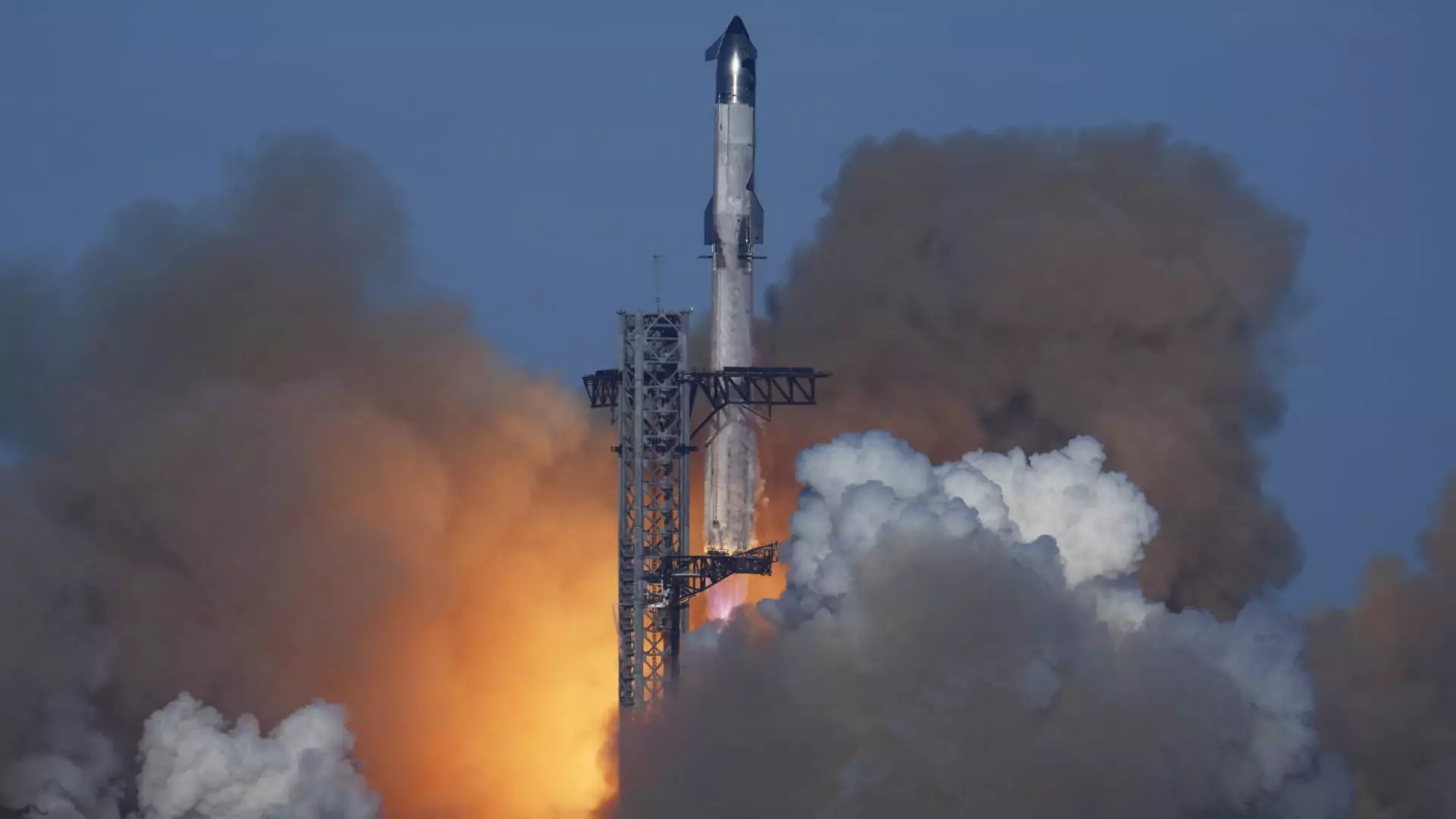SpaceX’s ambitious vision for space exploration took another step forward with the recent launch of its Starship rocket on its seventh test flight. Despite significant progress and impressive technology, this latest mission encountered critical challenges, including the loss of communication with the rocket’s upper stage shortly after launch. This incident raises questions about the reliability of space technology, the implications for commercial aviation, and the overall readiness of SpaceX for its ambitious plans for future space missions.
Launched from SpaceX’s Starbase facility in Texas, the Starship rocket began its ascent with high hopes. However, just nine minutes into the flight, mission control experienced a significant setback as communication with the upper stage was interrupted. According to Kate Tice, a senior manager in SpaceX’s quality systems engineering department, the company confirmed the loss of the spacecraft, indicating that it broke apart during its ascent burn. This breakdown of communication is critical; it highlights not only the vulnerabilities in rocket telemetry systems but also the inherent risks in aerospace technology, particularly during the testing phases.
In the wake of the communication failure, observers on social media shared dramatic visuals of what appeared to be fireballs streaking across the sky near the Caribbean islands—events that most likely derived from the debris of the disintegrating rocket. Following standard procedures, the Federal Aviation Administration (FAA) quickly issued a warning to pilots in the vicinity about potential falling debris, marking a moment that could easily be overlooked in the excitement of a space launch. The FAA’s involvement illustrates the importance of regulatory oversight in aerospace operations, especially when commercial flights intersect with rocket launches.
Amid concerns about air traffic safety, multiple airlines including JetBlue, Spirit, and FedEx had to divert their flights, emphasizing how space operations must respect the complexities of shared airspace. This raises an important question: how can SpaceX manage its launch schedules more effectively to minimize disruption to commercial aviation while pursuing its own ambitious goals?
On board during this recent test were ten “Starlink simulators,” which were intended to simulate the deployment of future Starlink satellites. This mission was a crucial step in evaluating the Starship’s capabilities, illustrating SpaceX’s focus on integrating broader satellite services with their launch technology. Prior to losing communication, Starship’s trajectory indicated it would reach space and circle the Earth before attempting a splashdown in the Indian Ocean. Such tests are not only about achieving technical milestones but are also integral to the larger vision that SpaceX has for its internet services and expanding its satellite constellation.
Moreover, the importance of these missions is heightened by the ambition to deploy advanced generations of heavier satellites. Starship is designed to deploy considerably larger payloads, catering to an expanding market of global communications, and is foundational in SpaceX’s quest for a sustainable revenue stream in an era where satellite communications are becoming increasingly vital.
Starship represents the culmination of groundbreaking engineering, boasting features such as a reinforced heat shield, a redesigned propulsion system, and an enhanced suite of onboard cameras for meticulous monitoring during flight. The rocket’s height and thrust capabilities outshine its predecessors—the Super Heavy booster combines 33 powerful Raptor engines to generate enormous thrust, effectively supporting unprecedented payload capacities.
Despite setbacks, each test flight contributes valuable data that informs future designs and operations. The “Block 2” version of the Starship continues to evolve, enabling increased performance while advancing SpaceX’s long-term goals of making interplanetary travel feasible and safe. Ultimately, these enhancements are designed to promote a frame of reusability—an important aspect that could revolutionize space flight logistics.
While the outcome of the recent launch was not as SpaceX envisioned, the company’s resolve to analyze, learn, and improve underscores the innovative spirit behind its development. As SpaceX continues to push the boundaries of what is possible in space travel, the dual emphasis on technological advancement and safety will be crucial in fostering public trust and ensuring operational reliability. As NASA partners with SpaceX for lunar missions, the performance of the Starship will be critical to America’s return to moon exploration. The future of space travel, with its exciting possibilities, is inherently linked to the lessons learned from these ongoing tests, challenges, and triumphs.

